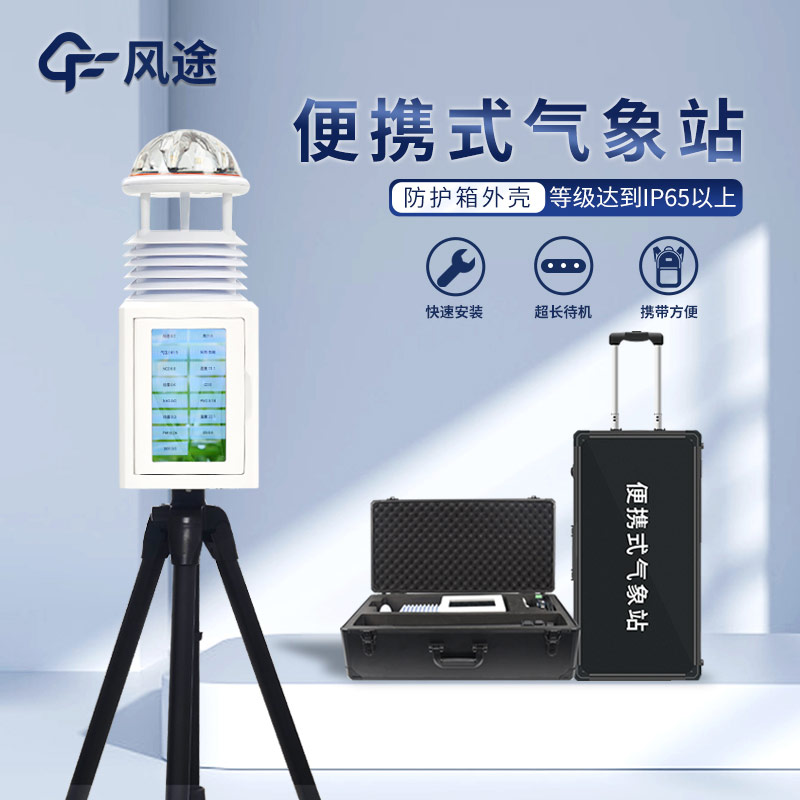Meteorological environment monitoring equipment supplier
Insist on doing high-precision customer favorite technology products
Accurate mastery of meteorological information is crucial for activities such as field operations, scientific expeditions, and outdoor sports. The Portable Weather Station is undoubtedly one of the best tools for acquiring meteorological data. Below are its three most prominent advantages:
1. Highly Portable and Flexibly Deployable
The Portable Weather Station is designed with a strong emphasis on lightness and convenience. It is typically compact in size, with a weight often controlled within a few kilograms — the core monitoring unit weighs no more than 5kg, making it easy for users to carry. Whether packed into a backpack for hiking adventures or placed in a vehicle for ready use, it imposes minimal burden. Additionally, its installation and disassembly processes are extremely simple: no professional tools or complex operations are required, and it can start measuring immediately after unpacking. Some models are equipped with vehicle-mounted tray brackets that can be placed on car roofs for mobile observations. This means the weather station can be quickly deployed in various outdoor environments, such as remote mountainous areas, dense jungles, vast grasslands, or even complex valleys, enabling timely meteorological monitoring and providing real-time weather data support for field activities.
2. Precise Measurement and Reliable Data
Despite their compact size, these weather stations have strong "inner capabilities," equipped with multiple high-precision meteorological sensors. Take wind speed measurement as an example: the integrated wind vane and anemometer can accurately monitor changes in wind speed and direction with high measurement accuracy and stability. Their technical indicators comply with meteorological observation standards.
3. Resilient in Harsh Conditions and Stable Operation
Considering the complex outdoor environments and changeable weather, the Portable Weather Station features a rugged design capable of withstanding harsh conditions. Its dustproof and moisture-proof ratings meet relevant standards, effectively preventing dust and moisture from entering the internal components and ensuring the normal operation of electronic parts. It can continue to operate uninterruptedly in severe weather such as thunderstorms and snowstorms. The sturdy external materials can withstand a certain degree of wind and rain impact without damage or shutdown. With low-power and energy-saving designs, when powered by solar panels, it can operate stably for long periods in areas without grid electricity, providing continuous support for outdoor meteorological monitoring.
